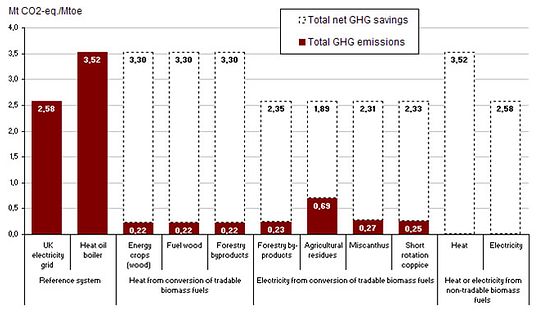Biomass benefits are still subject of many debates when compared with other renewable energy sources. However, biomass has many advantages over fossil fuels due to reduction of the amount of carbon emissions. The main benefits of biomass are:
Biomass is a renewable energy source
The benefit of biomass energy is that biomass is renewable source of energy and it cannot be depleted. Biomass mostly derived from plants, that means as long as plants are going to be on this planet, biomass will be available as renewable energy source.
Biomass helps climate change by reducing GHG
Biomass helps reduce the amount of GHG that give more impact to global warming and climate change. The biomass emissions level is far smaller compared to fossil fuels. The basic difference between biomass and fossil fuels when it comes to amount of carbon emissions is: all the CO2 which has been absorbed by plant for its growth is going back in the atmosphere during its burning for the production of biomass energy. While the CO2 produced from fossil fuels is going to atmosphere where it increases greenhouse effect.
Cleaner environment
Biomass energy helps to clean our environment. World population is constantly increasing with a increasing increased waste which needs to be properly disposed. Many of garbage ends up in water resources harming ecosystems and having negative impact on human health. This garbage could be used for valorisation and produced energy, bioferilizers and other products.
Biomass is widely available source of energy
Biomass is widely available energy source. The sources are from agriculture, forestry,fisheries, aquaculture, algae and waste. Many energy experts agree that when you combine economic and environmental character of energy sources biomass is on top of the list as one of the best energy sources.
GHG emission balances for biomass-fuelled electricity and heat applications
GHG balances for a wide range of technologies to produce electricity and heat were prepared by Elsayed, Matthews and Mortimer (2003). System boundaries encompassed the entire chain from fuel production to end-use. Some biomass systems show net GHG emissions savings of more than 40% of the substituted fossil alternatives, while some others only score 4%. Thus, the span of the environmental benefit is wide, and the effective value will depend on the particular application situation (technology, scale etc). The total GHG emissions from contaminated biomass fuels (non-tradables) are set at 0, since these fuels are available anyway. There existence cannot be avoided, and all GHG emissions associated with their production should be allocated to the products from which they are the unavoidable result.
To top
GHG savings for selected technologies to produce electricity and heat from biomass fuels

Source: Elsayed, Matthews and Mortimer (2003).
GHG emission balances of selected bio-transport fuels
For an assessment of GHG emission reduction that result from replacing fossil transport fuels by biofuels, the entire life cycle of the respective fuels is usually considered from well to wheel. A complete life cycle analysis (LCA) of emissions takes into account the direct emissions from vehicles and also those associated with the fuel’s production process, which includes: extraction, production, transport, processing and distribution. Ranges in data result from local variations between fuel routes and differences in technology, which may occur at all stages of the well-to-wheel fuel chain. The pivots indicate the uncertainty related to the used data.
The substitution of biodiesel for petrol results in a total GHG emission reduction of 45-80%. If replacing fossil diesel fuel, this emission reduction is smaller, because diesel shows lower CO2-equivalent well-to-wheel emissions than petrol. The range of ethanol-starch is quite broad, which can be partly explained by differences in crop (corn, sugar beet, molasses), and differences in technology.
Short-term well-to-wheel GHG emissions of Light Duty Vehicles running on various fuels

Source: IEA, 2003.
Long-term well-to-wheel GHG emissions of Light Duty Vehicles running on various fuels

Source: IEA, 2003.
GHG savings for selected bio-transport fuels

Source: Elsayed, Matthews and Mortimer (2003).
